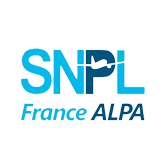
IFALPA Briefing Leaflet: Ocular Hazards of UV and Blue Light Exposure
The range of wavelengths of visible light is from approximately 400 nanometres (nm) to 700nm. The wavelength of UV radiation is below that of visible light, ranging from 100nm to 400 nm. Since UV radiation has more energy than visible light, it may cause damage to the ocular lens of the eye causing cataracts. Blue light may play a role in the pathophysiology of macular degeneration depending on exposure intensity and time (...)
IFALPA Statement: Two Pilots, One Priority: Elevating Flight Safety
Discussion surrounding new technologies like Artificial Intelligence (AI) and autonomous vehicles in the aviation industry are advancing on many different levels. However, the central concern remains: will increased automation and technology truly enhance industry resilience, safety, and efficiency, or will it leave us more vulnerable? (...) For more information on this topic, please visit www.safetystartswith2.com
Joint Safety Bulletin IFALPA-IFATCA : Unlawful Communication Interference within the Mogadishu FIR
IFALPA and IFATCA have been made aware of aircraft experiencing a critical communication issue while en-route over Somalia, within the Mogadishu FIR. Crews were presented with instructions coming from "fake controllers" via the regular ATC frequency, with the apparent intention of diverting the flight from is planned route.
Position Paper IFALPA: Dangerous Goods on RPAS and UAS
Whilst the transport of DG on manned aircraft is heavily regulated, in most States there is currently no set of regulations that controls how DG are transported by RPAS and UAS. The carriage of DG by RPAS and UAS should only take place at a level of safety equivalent to the one guaranteed by ICAO provisions for manned aircraft (...)
IFALPA Briefing Leaflet: Detrimental Effects of Identifying Crew Members in Accident Reports
The goal of every accident investigation is to discover the contributing factors of the occurrence. Crew members involved in an accident or incident are often willing participants in the investigation, knowing that they are contributing to aviation safety by providing the information required to prevent a reoccurrence (...)
Position Paper IFALPA: PED Smoke or Fire Response Kits
Some airlines have been providing containment bags or boxes to crew members as part of their Dangerous Goods smoke or fire response kits, to deal with a potential thermal runaway of PEDs. IFALPA believes that these items need to meet certain requirements before being considered suitable for use (...)
Position Paper IFALPA: Deidentified Accident Reporting
In an occurrence report, identifying the individuals involved has no safety benefit and can only lead to the attribution of blame or liability. The traits or experience that contributed to the event are sufficient in identifying safety risks and addressing measures of prevention (...)
Position Paper IFALPA: Carriage of Persons on Cargo Aircraft
Reference is sometimes made to Dangerous Goods Regulations to determine which persons are allowed onboard commercial transport aircraft (both passenger and cargo). This determination is not the role of the DG regulatory structure and goes well beyond its scope. The final decision to accept any persons onboard should be left to the pilot-in-command (...)
Press Release IFALPA on Aircraft Accident at Japan’s Haneda Airport
The International Federation of Air Line Pilots’ Associations (IFALPA) is closely monitoring the developments related to the accident involving Japan Airlines flight 516, an A350 aircraft from Sapporo (CTS) to Tokyo Haneda (HND) and a DHC-8 aircraft. Our thoughts are with the friends and families of the five crew members that were onboard the DHC -8 aircraft (...)
Position Paper IFALPA: Protection of All Cockpit Recordings
Although ICAO Annex 13 para. 5.12 has clear provisions for the protection of "cockpit voice recordings, airborne image recordings and any transcripts from such recordings", there are no ICAO definitions of "cockpit voice recordings" and "airborne image recordings", which leaves it to the States to decide which recordings should fall under these provisions and which should not (...)
